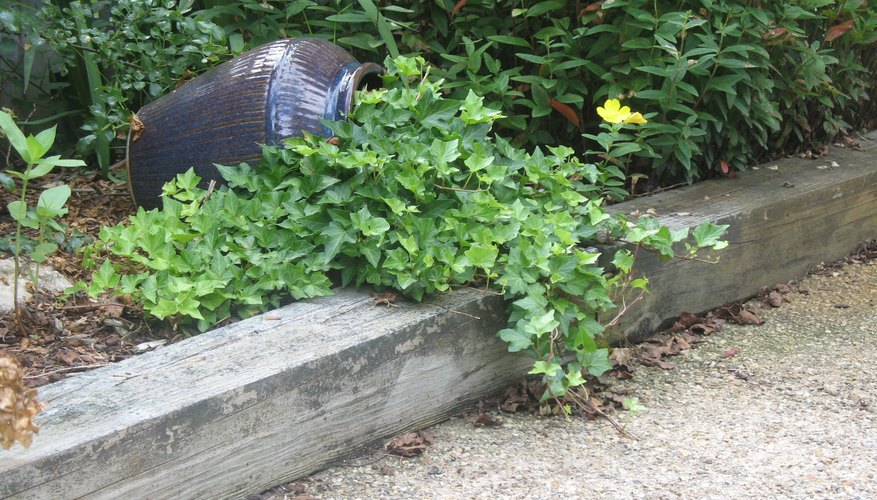Landscape edging forms a frame for your garden. Edging can be very expensive, especially when using preformed landscaping bricks to line your gardens. There are plenty of options for inexpensive landscape edging. Being creative, purchasing edging on sale and self-installation will help keep cost down. Let's look at some inexpensive landscape edging options to beautify your gardens.
Rocks
Rocks don't cost a thing when you find them in vacant lots, in the woods or from construction sites. In fact, rocks are such an integral part of landscaping that getting a few more than needed for a planned border might be a good idea. Place rocks to edge the garden to create definition. Choose strategic positions within your gardens to enhance the edging. Repetition of rock colour and texture creates unity within the garden landscape.
- Rocks don't cost a thing when you find them in vacant lots, in the woods or from construction sites.
- Place rocks to edge the garden to create definition.
Wood Edging
Just about any type of wood can be used to edge a garden. Landscape timbers are typically used to edge gardens. Wood can present some difficulty when edging around curved gardens. However, experiment with what looks best before digging trenches to house the wood. Consider using uniform pieces of firewood. Pre-made wooden block edging is created from stumps of wood. These tubular shaped pieces of edging have the wood placed on end and are banded together in sections to form a series of wooden steps. While not the most inexpensive choice, these sections provide a beautiful edging with varying heights.
- Just about any type of wood can be used to edge a garden.
- These tubular shaped pieces of edging have the wood placed on end and are banded together in sections to form a series of wooden steps.
Trench Edging
Use a shovel to edge the gardens rather than installing a more permanent border. Edging with a shovel involves digging an angled trench along the outside edge of the garden. Remove the dirt and draw mulch down into to trench. The angle creates a definitive line between the garden and grass areas. Edging with a shovel doesn't really work well against sidewalks or pavement. This completely free landscape edge often flatters a garden more than any other border.
- Use a shovel to edge the gardens rather than installing a more permanent border.
- The angle creates a definitive line between the garden and grass areas.
Plastic Edging
Home improvement stores sell lengths of 4- to 6-inch plastic edging to help keep garden mulch inside the garden where it belongs. Plastic edging requires the homeowner to dig a thin trench for installation, filling in on both sides to keep the plastic firmly in place. This sturdy edging will last a very long time but cannot withstand being run over by a lawnmower. This edging can crack and fade over time with continued exposure to the sun. Plastic edging is an excellent choice for a quick fix to neaten up a garden.
- Home improvement stores sell lengths of 4- to 6-inch plastic edging to help keep garden mulch inside the garden where it belongs.
- Plastic edging requires the homeowner to dig a thin trench for installation, filling in on both sides to keep the plastic firmly in place.
Edging with Plants
No one ever said a garden border needed to be plastic, metal, wood or rock. Try planting a low ground cover continuously around the edge of your garden. Choose colours that complement the existing flowers and shrubs in the garden. Consider just using foliage plants to create a line of green that frames the flowers in your garden bed.
- No one ever said a garden border needed to be plastic, metal, wood or rock.
- Consider just using foliage plants to create a line of green that frames the flowers in your garden bed.
